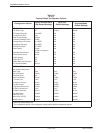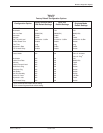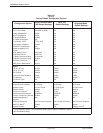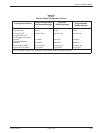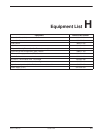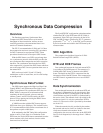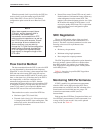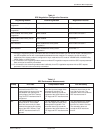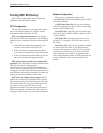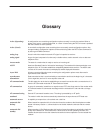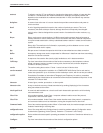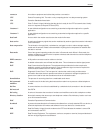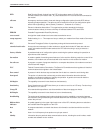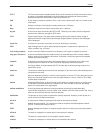
COMSPHERE 3800Plus Modems
I-2 October 1998 3980-A2-GB30-40
When the transmit clock is provided by the DTE, the
receive clock is set by the modem equal to the DTE
clock. When SDC is in use, the Tx Clock Source
configuration option cannot be set to Receiver Clock
Loop.
NOTE
When faster speeds are used (above
57.6 kHz), and the transmit clock is
provided by the modem, data
transmission can be sensitive to DTE
cable length and capacitance, as well as
the DTE’s drivers and receivers. Should
you encounter bit errors related to the
above conditions, you may want to
change the Tx Clock Source configuration
option setting to External (provided the
DTE can support the required transmit
clock signal) or change the length of the
DTE cable.
Flow Control Method
The data transmitted from the DTE is sent to the DCE
at a rate determined by the transmit clock frequency.
When SDC is active, this data is then compressed in the
DCE and sent to the remote DCE at the line rate less
than the rate between the DTE and DCE (usually twice,
three, or four times less). If the data sent by the DTE is
not compressible, or bad line conditions cause
retransmissions between the two DCEs, then the
transmitting DCE must indicate to the transmitting DTE
its temporary inability to accept more data; this is flow
control. Flow control is also required in Buffer mode
since the DTE rate and line rate can be different.
Three methods are used to control the DTE flow:
• Hardware signal CTS (circuit 106).
• Transmit clock (circuit 114). If the transmit clock
is clamped, then the DTE stops sending data. This
method only works when the transmit clock is
provided by the modem.
• Natural flow control. Some DTEs can only send a
limited number of information frames without any
acknowledgment from the remote DTE. This
number is the acknowledgment window size. If the
DCE buffers this number of DTE frames, it will
not receive another DTE frame. This is equivalent
to the SyncFlowControl configuration option
being set to None.
SDC Negotiation
The use of SDC and the values of the associated
parameters are negotiated at link establishment via a
protocol. The three associated parameters have the same
meaning as those used for asynchronous data
compression:
• Dictionary size parameter
• Maximum string length parameter
• Data compression request parameter
The SDC Negotiation configuration option determines
how two modems connect when one or both modems
have SDC enabled. Two settings are available in the
SDC Negotiation configuration option: LAPM_Buffer
and LAPM_Discon.
Table I-1 shows the six possible SDC Negotiation
configuration scenarios.
Monitoring SDC Performance
If SDC is enabled, six performance measurements
related to SDC can be displayed on the DCP. These
measurements are available in the SDC submenu of the
Status branch and are divided into two groups: TX
(transmit) measurements and RX (receive)
measurements.
Both groups have DTE Rate, Compression Ratio, and
Line Efficiency measurements. Each measurement is an
average of the last ten seconds’ data, and is updated
every second. See Table I-2.



